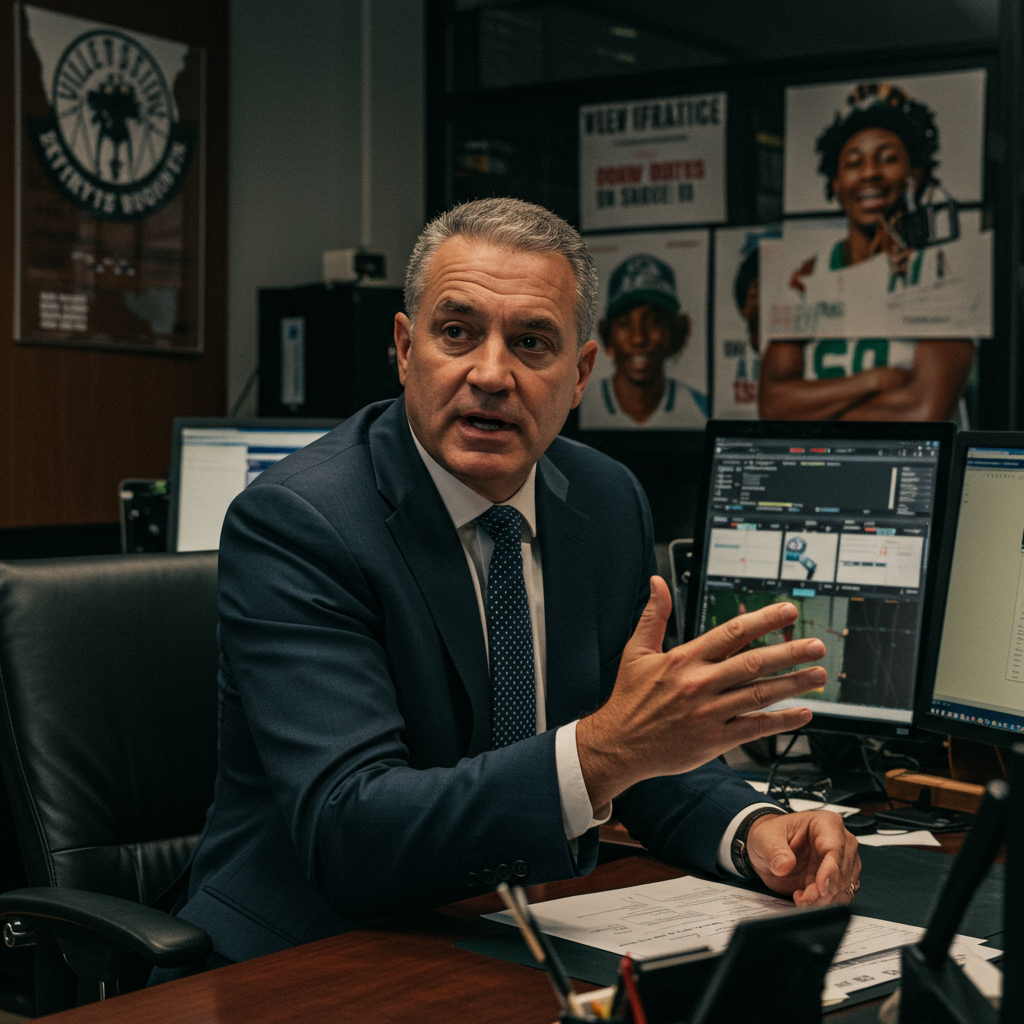The high-stakes world of the NBA has never felt more challenging, with the physical toll of deep playoff runs and complex financial rules creating a perpetually shifting landscape. For the Boston Celtics, a franchise recently expected to contend for another title, that reality hit hard and fast.
After entering the season retaining a significant portion of their championship-contending roster and cruising to an impressive 61 regular-season wins, expectations were sky-high. However, in a devastating turn during the Eastern Conference semifinals, star forward Jayson Tatum suffered a ruptured Achilles tendon. This sudden injury fundamentally altered the team’s immediate future and forced management’s hand.
The Unavoidable Roster Shake-Up
Faced with both a crippling injury to their cornerstone player and the punitive financial implications of a burgeoning payroll under the new Collective Bargaining Agreement (CBA), the Celtics were compelled to make significant changes. Unlike previous eras where the team might have ridden out an injury while keeping the core intact, the current financial reality mandated action. This necessity led to a series of moves that, while perhaps saddening for fans given the team’s prior success, were deemed cold, calculated, and entirely necessary by many observers. The franchise, known for its business-first approach demonstrated by tough decisions in the past (such as the emotionally charged Isaiah Thomas trade), once again prioritized long-term health and financial flexibility.
Over a swift 48-hour period, the Celtics executed two major transactions:
Veteran guard Jrue Holiday was traded to the Portland Trail Blazers in exchange for Anfernee Simons and two second-round draft picks.
Center Kristaps Porzingis was moved to the Atlanta Hawks in a three-team deal also involving the Brooklyn Nets, with Boston receiving forward Georges Niang and another second-round pick.
Financial Engineering and Future Flexibility
These moves were not just about reshuffling players; they were primarily a strategic financial maneuver. The Celtics successfully shed approximately $135 million in future salary obligations while bringing in around $36 million. Holiday was set to earn $104 million through 2028, and Porzingis was on a $30.7 million expiring deal. Collectively, their salaries would have represented about 40 percent of the team’s projected cap figure next season. The incoming salaries of Simons and Niang total roughly 23 percent.
This drastic reduction in payroll was “masterful” front-office work, allowing the Celtics to slide under the dreaded second apron and position themselves within reach of dropping below the luxury tax line entirely. This is crucial for avoiding increasingly harsh repeater tax penalties in the coming years. While still potentially facing tax payments currently, they have several avenues – including further cost-cutting or future trades before the deadline – to gain more financial wiggle room.
Brad Stevens, in his role leading the front office, appears to have engineered something of a “soft landing with upside.” By managing to acquire assets (three second-round picks) while dumping significant salary, he’s preserved future flexibility. The team also generated a valuable $22.5 million trade exception in the Porzingis deal, valid for a year, and retains control of most of their future first-round draft picks.
New Faces and Shifting Dynamics
The acquired players bring different dynamics. Anfernee Simons, a 26-year-old guard on an expiring contract, is a particularly intriguing addition. Despite defensive limitations and minimal playoff experience, his explosive scoring ability and ball-handling could be valuable, especially in Tatum’s absence. Given Boston’s spacing, he has the potential to average 20+ points. His expiring contract also offers future flexibility; he could potentially be flipped later for even less salary if needed to duck the tax.
Georges Niang adds a different dimension as a floor-spacing forward. With Joe Mazzulla likely continuing his emphasis on high-volume 3-point shooting, Niang fits the tactical mold.
The team’s identity may shift, potentially needing to play faster and utilize the youth and athleticism of players stepping into larger roles. The current projected rotation looks significantly different from just weeks ago, featuring players like Jaylen Brown, Derrick White, Simons, Niang, Sam Hauser, and Payton Pritchard alongside younger pieces.
An Uncertain Path Forward
These trades signal that the Celtics are, in a sense, taking a deliberate step back in the short term. The clear focus is on being positioned to contend again when Jayson Tatum is expected to return to full strength, potentially years down the line. Despite the significant changes, the cupboard isn’t bare. The team retains All-Star Jaylen Brown and key guard Derrick White (though speculation persists about whether Stevens would consider moving one if a “ludicrous offer” involving high draft picks arose, as rumored ahead of the draft), along with strong 3-point shooting and potential wild cards like Simons.
The situation feels like the second act of a play – the major plot twist (Tatum’s injury) has occurred, the core conflict (financial constraints vs. competitive aspirations) is clear, and the characters (new players, existing stars) are in place, but the outcome is far from certain. Boston’s path back to championship contention hinges heavily on Tatum’s recovery and how effectively Stevens continues to navigate the complex financial and roster challenges. The decisions made highlight the challenging reality of managing an NBA contender in the modern era, where even necessary, calculated moves come with significant risk and fan heartbreak.



